Franz Drack is head of marketing and sales at &ever, a company making indoor incubators to grow plants for human consumption. He tells The Common Table how, after 20 years in brand marketing in the industry, he came to be convinced that the old mass-production food chain systems need to change radically. A conversation about the rise of vertical farming, the value of food and growing greens.
Orlando Lovell: Can you tell us briefly who and what is &ever how and why it was founded?
Franz Drack: There are 61 of us at &ever. Two are based in Singapore, 30 based in Kuwait, and the rest are in Munich and Hamburg, Germany. Our headquarters are in Munich but we are working in a very global way with a lot of different projects happening all over the world. We plan to set up another office next year in Japan. &ever was founded by Mark Korzilius [co-founder of the international restaurant franchise Vapiano ed.]. He asked himself whether the current food supply chain could be improved as he had a feeling that people do want a fresher and healthier salad than the one currently available in plastic bags. This led him to travel around the world exploring different vertical farming possibilities and finally launching &ever in Hamburg in 2015.
OL: And you are also new to the business of vertical farming. What convinced you to get on board?
Before &ever, I was working for a coffee company on sustainable topics such as direct trade and compostable coffee capsules. This is where I think my climate awareness journey started. I got quite interested in agriculture in urban environments: community gardens, rooftop warehouses and the like, but I felt that these solutions were hard to scale and provide for larger communities. Then I discovered vertical farming and a few weeks later an opportunity at &ever came up on their website. I applied and was lucky enough that the interest was mutual.
Sophie Lovell: So are you going to solve the world’s food problems with mass-produced indoor salad?
I wish I could! (laughs). But as we know from Darwin, the systems with the most diversity are the ones that are the most adaptive to outside challenges. I really believe that vertical farming can be one of a vast range of initiatives, responses and solutions to the threat climate change poses to our access and availability to food.
As we know from Darwin, the systems with the most diversity are the ones that are the most adaptive to outside challenges.
SL: What about the nutritional content of the crops you are growing? Mass-produced lettuce, for example, is not terribly nutritious.
There are several studies that show the nutrition levels of mass-produced food have been declining over the last 50 years. For example, if you would eat a kilogram of salad today, it usually has about 50 per cent less nutritional value than it would have had in the 1970s. And in the 1970s, it was already maybe 30 per cent less than it was in the 1940s.
OL: So how can you help improve that with &ever crops?
Low nutrition levels are partly due to monoculture i.e. not respecting the traditional way of farming where you rotate the crops cultivated on a field and the distance harvested food is travelling before being consumed. In Singapore you can buy rocket that is flown in from Italy. We need to stop this nonsense and grow crops closer to the consumer. And vertical farms can help.
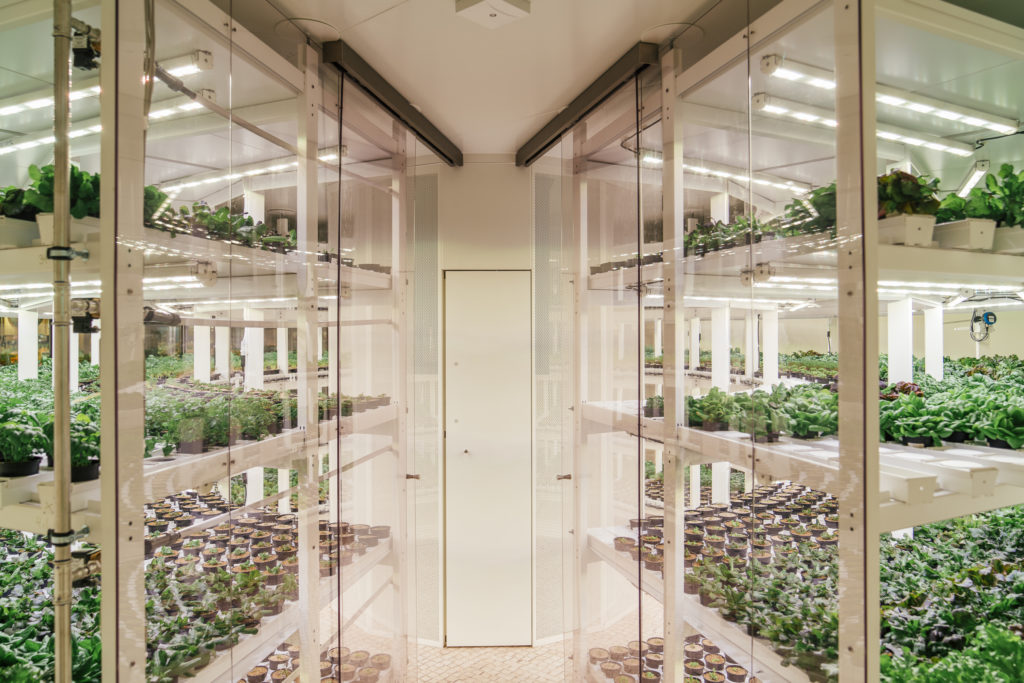
OL: Before joining &ever, you worked for Coca-Cola, Absolut Vodka, and the coffee brand J.Hornig, amongst others, what’s your own view on the food industry and the current system behind it?
I’ve been working in the consumer goods field for over 20 years. How the current system usually works is: you create a very high output and then you try to price everybody out of the market through economy of scale. And then you have a product. The problem with this is, that you then have a product that is not what the consumer actually wants, it’s the product that they get, and it’s the cheapest. This is what we have to rethink.
OL: How did it get to be this kind of system in the first place?
This industrial system of producing food was extremely helpful to feed everyone after the Second World War, as well as with the rapid population increase – it made a lot of sense. But it makes no sense to use this as our modus operandi moving forward. The good thing is that the founder of &ever, Mark Korzilius, is not the only person that sees it like this. In my previous job, I also heard, for example, Verena Bahlsen, talking about exactly the same thing at the OMR conference [Online Marketing Rockstars ed.] in 2019 and saying that this needs to change.
We need to stop this nonsense and grow crops closer to the consumer.
OL: The 27-year-old current co-owner of Bahlsen, the biscuit company?
Yes, exactly. She held a speech two years ago, which was widely criticised because she made a joke about being a capitalist. This was a bit unfair because people missed the main point she was trying to make: that we need to rethink our industry. And Mark was thinking along the same lines, so – typically Mark – he wanted to see if he could do salads and microgreens better. The vertical farming industry has really boomed over the last decade. There’s a lot of investment money but it’s still not very consumer-centric. We want to create a fantastic product that has a very small environmental footprint. It has a lot to do with the potential of upscaling and creating new opportunities for the food industry. Mark looked into different technologies and finally settled on dryponics.
OL: Could you explain how dryponics works?
It’s basically a vertical farming system where you place the plant on a fibre above water, allowing it to grow without any soil. The roots that are suspended in the water take up the nutrients that the plant needs, but not more.
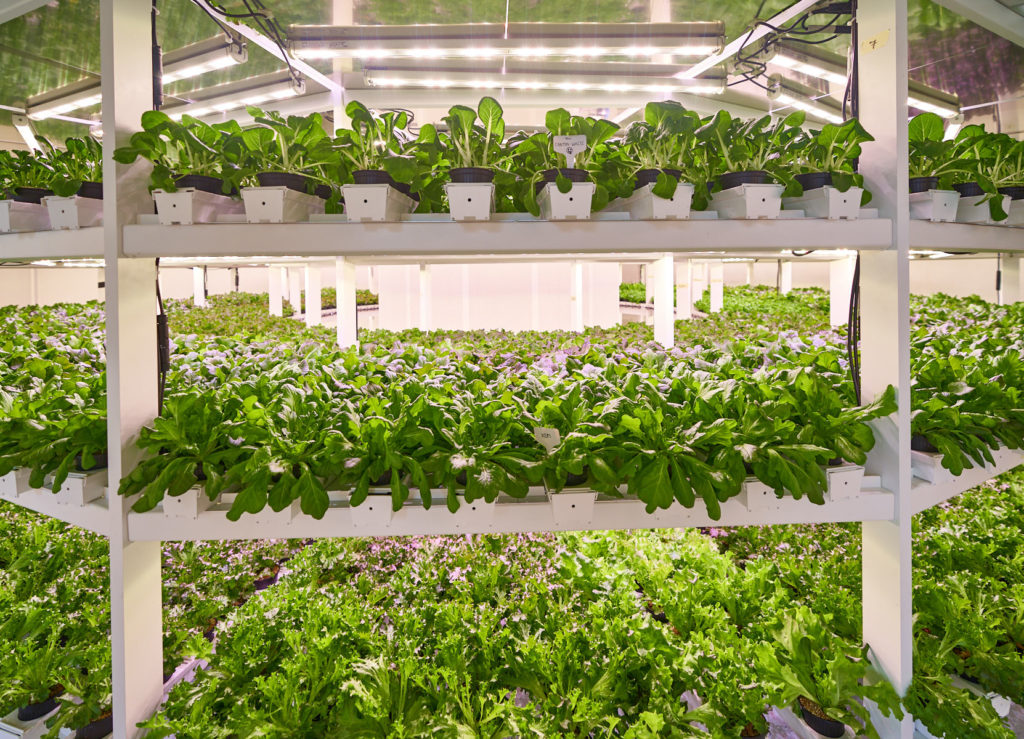
SL: When and where did &ever build their first vertical farm with the dryponics system?
We built our first vertical farm in 2020 in Kuwait. A lot of food is imported into Kuwait from Europe, flown over from France or the Netherlands, but Kuwaitis wanted a system to grow salad greens locally so we entered into a collaboration with them. After that, we had a similar situation with the local government in Singapore, where they also import all their food. They are very interested in increasing the amount of food grown within their city borders because they are worried about climate change or possible economic stand-offs, which could lead to them not being able to feed their own people.
SL: That’s a really interesting and very ancient human concern.
Yes. It reminds me a lot of our own history. I’m from Austria, and in the 1920s the city government in Vienna gave financial concessions to the surrounding regions to ensure that in the event of Vienna being cut off from supplies, they would still have enough potatoes to feed their people.
A lot of people started shopping in their own neighbourhoods more because they wanted to make sure that local business owners stayed afloat.
OL: So what’s next for &ever?
We just launched our first “grow tower” in Munich. The system that we now have is in three different sizes because we realised that different people have different needs. Not everybody can build a mega farm that is 3,000 square metres. Sometimes you have a supermarket that just needs a certain output, and so we provide them with this technology.
SL: How big is this first grow tower that you built in Munich?
It’s actually not that big. It’s 8 x 8 metres and three metres high and can produce 30 to 50 kilos of lettuce every day. We built this first one at Edeka Stadler and Honner who own several supermarkets in Bavaria. They were rebuilding a whole supermarket site, so we approached them and asked if they would be interested in setting this up. For them, it’s more like an investment. They want to see if this can work. And if it does, we can build on it together. It’s really interesting to see that, even in Germany, there is so much interest in it.
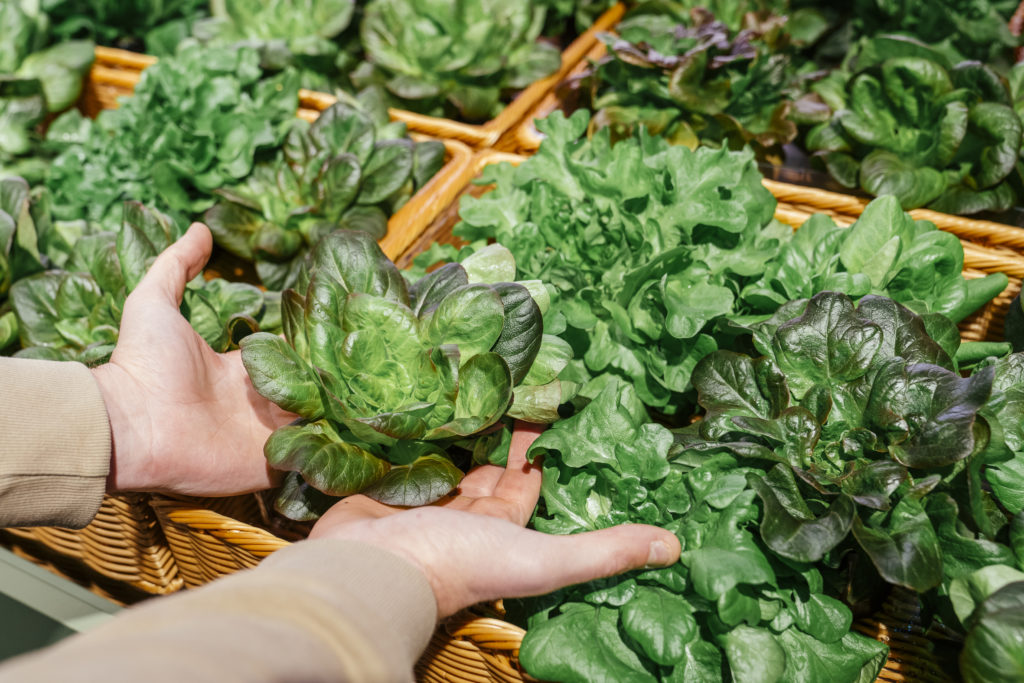
SL: Do you think this would have happened, if, for example, COVID-19 hadn’t happened and everyone suddenly got interested in growing their own things at home or locally? Or does that have nothing to do with it?
I think COVID-19 may have been an accelerator with the stronger move it brought towards local produce and local communities. A lot of people started shopping in their own neighbourhoods more because they wanted to make sure that local business owners stayed afloat. People actively tried to change their shopping behaviour, perhaps thinking: “I don’t really need to buy this from Amazon, maybe I can support somebody that is in my community instead.” I think it is generally a beautiful thing that this is finally coming to our society.
OL: But do you think shopping more locally and caring more for the community is only due to the pandemic?
This idea of “Small is Beautiful”, is something that was suggested by E. F. Schumacher in the 1970s. But at the time, everybody was more interested in international brands, the bigger the better and the more varieties, the better. I used to work with Absolut Vodka and you could really see the peak years for international spirits were from the 1970s and ‘80s up to 2010. But then consumer behaviour suddenly moved away from that. People are now more interested in buying a spirit that comes from the city or from the town they are in. It’s the same with craft beer. I think there’s this general, I wouldn’t say anti-globalist, movement and it’s coming full circle again.
It has now grown to become a sustainable political movement that is so strong, even the old white men in food companies are finally waking up.
OL: What do you think triggered this shift into the mainstream?
One key aspect is originality and authenticity, and the second aspect is the whole discussion about the value of food. This is something that came about through the organic movement. It has now grown to become a sustainable political movement that is so strong, even the old white men in food companies are finally waking up and saying “This is something that we need to react to.” The old thinking was always to create more line extensions and relaunch the brand – making it look more organic. The proposed changes were so often only visible in the packaging design. Not in the packaging materials, sourcing of the ingredients, not in the logistics. It’s something that still makes me very angry because the role of design is not to cover things up.
SL: What you’re working with now is in certain respects the antithesis of the conventional idea of naturally grown local produce. How do you balance that in the consumers’ minds so that they accept a new idea of local and natural but in a very sci-fi, hi-tech environment?
I think this is also something that we should not hide. It’s maybe a more technological view of farming: a little bit like if guys from Silicon Valley were to build a farm.
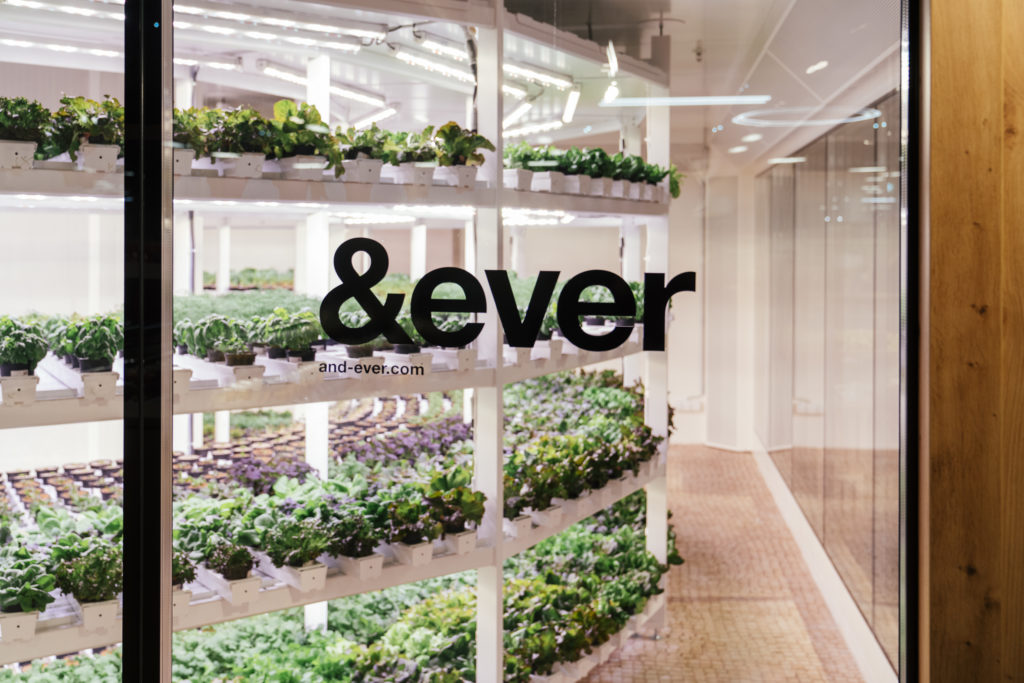
SL: Out of interest, what is the cost of production? How does the price that you’re selling, say, a kilo of lettuce at compare to your CoGS?
We do not have a higher margin than other cultivators of greens. It’s quite similar in terms of the cost structure. We are saving water and saving land because we don’t need fields to grow, instead, we have the cost of technology, buildings and labour. I think the value is more in the fact that you can provide greens that are not travelling 2,000 kilometres to get to the consumer as well as a certain level of food safety and things like that. I think that’s the reason why vertical farming is coming along now.
SL: So do you have figures where you’ve calculated the energy cost and production cost per kilo compared to other farming methods, such as a greenhouse in the Netherlands?
It’s a bit of a mix, our energy costs are around three times higher than a classical greenhouse but labour costs are 40-60 per cent lower due to automation and machine learning. We are also able to produce yields up to 200 per cent higher than a traditional greenhouse. Still, energy efficiency is the key to the high adoption of vertical farms, that is why we have spent a lot on research in this area. Just recently we signed a collaboration with A*STAR in Singapore to look into how we can combine sunlight and LED technology to save energy.
Our energy costs are around three times higher than a classical greenhouse but labour costs are 40-60 per cent lower due to automation and machine learning.
OL: So will vertical farming replace other types of farming in the future?
There are some people in the company saying that this is the future and everything else will go away, but I think it’s more likely that there will be peaceful coexistence with open-field and greenhouse farming. We also see a lot of very rare and old varieties coming back at the moment. With vertical farming, we are able to grow varieties that are maybe not so efficient, but are tastier, or have different shapes and colours. We are also providing opportunities to grow salads in places where it’s usually not possible – and all year round.
SL: What is the production scale you are thinking of? I have this mental picture of repurposed office buildings in the middle of a city turned into vertical farms that supply the neighbourhood or the entire district.
I think this would be fantastic and is a little bit our dream as well. But at the moment the focus is more on properties on the outskirts of cities. Property prices are still quite high in the city, especially office spaces. But this could also change. Because of COVID-19, a lot of companies have switched over to remote working and a lot of employees are not even coming into the office anymore.
SL: It would make more sense to have your vertical farms in city centres. Building new structures for them on the periphery between IKEA and Hornbach is pretty old system logistics, isn’t it?
Yes, this was also one of the reasons why we created the smaller version, the grow tower, so that we can put it into a larger supermarket or into canteens in schools or offices. It’s insane how big some canteens are, feeding up to 9,000 people a day. If you could switch them over to vertical farms, it would be amazing, because, at the moment, tons of salad are being transported large distances.
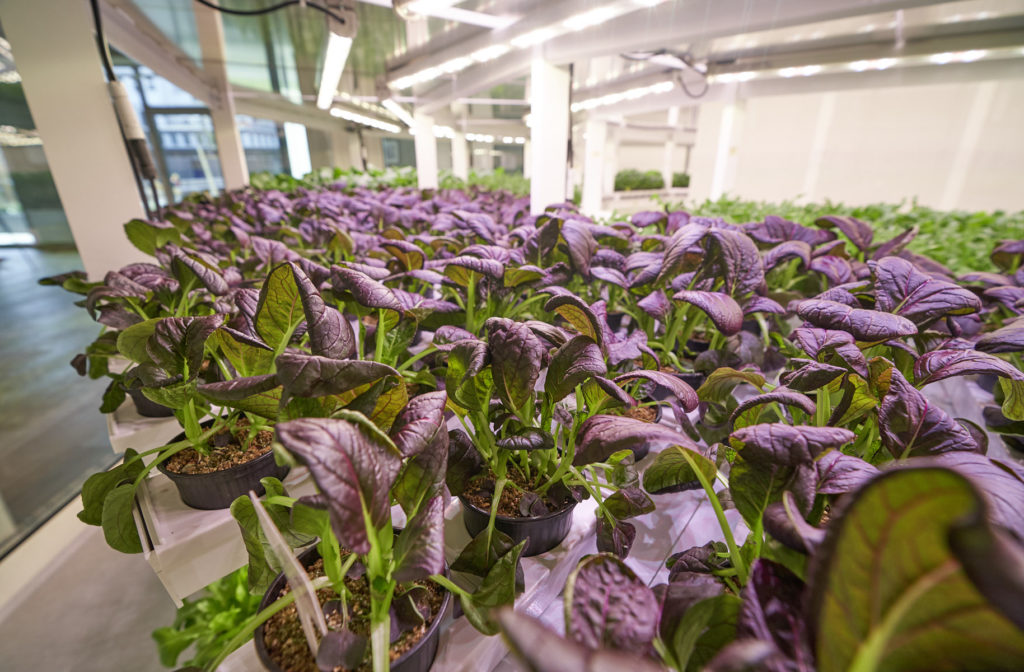
OL: How are your Kuwait and Singapore projects doing? Are these structures already built and functioning?
The Kuwait farm opened last April. It is up and running and producing around 200 kilos of greens a day. We are supplying a lot of supermarkets and restaurants and it’s very well accepted. We actually have scalability challenges there at the moment, because we didn’t expect that so many people would be interested in working with us.
OL: What are the core elements of your growth system?
What you need to build a vertical farm is a really good irrigation system, a lighting system and a system to manage the space that the plants are growing in. Our grow tower, for example, is circular in shape so plants can start on the inner circle and get pushed outwards to a wider diameter and more space as they get bigger. And then the fourth thing you need is, of course, climate – the temperature needs to be quite stable. We have a climate cell technology that basically shields the plants in their own climate where there are no pests coming in.
SL: Interesting. Presumably, hygiene is also a big aspect for customers too. E. coli outbreaks involving lettuce in California, for example, have been quite a topic recently. I would imagine you can control the cleanliness of your system relatively well…
We don’t need any pesticides because if there are no pests, you don’t need pesticides. That’s also the big advantage of the climate cell, it’s completely locked down – the seed, or the little plant, comes in and then it grows. There are no other external factors that can attach it to it. But of course, the big challenge of running something like this is to get the levels right: if the water runs too fast, for example, the plants get stressed. You cannot just buy a few pipes and start a vertical farm. It’s a little bit more complicated.
A lot of our younger consumers were not aware that there’s actually a plant that the mustard seed comes from.
OL: Are you just producing lettuce or can you grow anything that grows upwards?
I would say that half of our products currently being sold are classic lettuce. But we also sell a lot of mustards and other herbs. At first, a lot of our younger consumers were not aware that there’s actually a plant that the mustard seed comes from. You can also grow things like strawberries vertically, but it’s much more difficult because of issues like pollination, so less complex green leaves, like lettuce, tend to work best for now.
SL: Could you imagine having different nutrient mixes for different flavours? Like a “Southern Italian” nutrient mix or whatever?
I think the idea that we add certain nutrients to the soil so that the plants that grow on it can be beneficial to us medicinally is interesting. Vertical farms could potentially create more nutritious varieties with health benefits in the future. The future is diversity, also in crops and approaches.
We’re using technology because we want to grow salads vertically, but this doesn’t detach us from the other big discussions such as how to make sure that the nutrients are coming back into food. I think this is one of the reasons why we, as a team, are so excited and want to make sure that people understand what we are doing.
Franz Drack started his career at Coca-Cola and L’Oréal before joining Absolut Vodka in 2004. The Austrian sales and marketing expert worked there in various positions before becoming Global Marketing Director in 2013. Then, following a two-year stint with LEGO as a Brand Director, Franz started his climate awareness journey working for the sustainable coffee brand J. Hornig before joining vertical farming company &ever in March 2021 as CMO.
Interview by Sophie & Orlando Lovell






